Showing Spotlights 289 - 296 of 334 in category All (newest first):
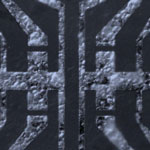 The integration of biological components with electronics, and more specifically, the interfacing of complex biological systems is one of the current challenges on the path towards bioelectronics (or bionics for short). Up to know, and due to its technology maturity, most of the work has been done based on Si-FET technology. However, there have been some issues related to this technology which prevented a more successful implementation into real applications. Researchers have now demonstrated, for the first time, that CVD grown graphene can be employed to fabricate arrays of transistors which are able to detect the electrical activity of electrogenic cells.
The integration of biological components with electronics, and more specifically, the interfacing of complex biological systems is one of the current challenges on the path towards bioelectronics (or bionics for short). Up to know, and due to its technology maturity, most of the work has been done based on Si-FET technology. However, there have been some issues related to this technology which prevented a more successful implementation into real applications. Researchers have now demonstrated, for the first time, that CVD grown graphene can be employed to fabricate arrays of transistors which are able to detect the electrical activity of electrogenic cells.
Nov 22nd, 2011
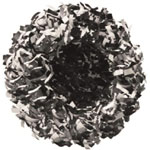 Lithium-ion batteries have been widely used in many electronic devices that are important to our daily life. However, after a steady improvement of some 10-15% during the last two decades, the energy density of lithium-ion batteries is now approaching its theoretical limit set by the energies of cathode and anode materials used in these batteries. Therefore, in recent years, the pursuit of the next generation of energy storage systems has been intense globally. Among various electrochemical energy storage systems explored to date, the lithium-air (Li-air) battery is one of the most promising technologies, with a theoretical energy density nearly ten times that of conventional lithium-ion batteries. A novel air electrode consisting of an unusual hierarchical arrangement of functionalized graphene sheets delivers an exceptionally high capacity.
Lithium-ion batteries have been widely used in many electronic devices that are important to our daily life. However, after a steady improvement of some 10-15% during the last two decades, the energy density of lithium-ion batteries is now approaching its theoretical limit set by the energies of cathode and anode materials used in these batteries. Therefore, in recent years, the pursuit of the next generation of energy storage systems has been intense globally. Among various electrochemical energy storage systems explored to date, the lithium-air (Li-air) battery is one of the most promising technologies, with a theoretical energy density nearly ten times that of conventional lithium-ion batteries. A novel air electrode consisting of an unusual hierarchical arrangement of functionalized graphene sheets delivers an exceptionally high capacity.
Nov 2nd, 2011
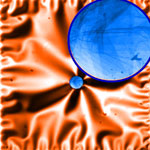 Analyzing the physicochemical processes that take place at surfaces and interfaces is an important aspect in materials science, catalysis, biochemistry and other fields. For many years, surface scientists have relied on powerful tools like X-ray Photoelectron Spectroscopy (XPS) and other spectroscopy techniques based on the detection of electrons. XPS reveals the elemental composition and chemical and electronic states of surfaces by irradiating a material with a beam of X-rays and measuring the energy and electrons that escape. However, it still remains a great experimental challenge to adapt powerful, surface sensitive tools such as XPS or to explore objects at ambient conditions. Researchers now demonstrate that graphene oxide membranes are a very promising window material for environmental cells to enable XPS studies of samples immersed in liquid or dense gaseous media.
Analyzing the physicochemical processes that take place at surfaces and interfaces is an important aspect in materials science, catalysis, biochemistry and other fields. For many years, surface scientists have relied on powerful tools like X-ray Photoelectron Spectroscopy (XPS) and other spectroscopy techniques based on the detection of electrons. XPS reveals the elemental composition and chemical and electronic states of surfaces by irradiating a material with a beam of X-rays and measuring the energy and electrons that escape. However, it still remains a great experimental challenge to adapt powerful, surface sensitive tools such as XPS or to explore objects at ambient conditions. Researchers now demonstrate that graphene oxide membranes are a very promising window material for environmental cells to enable XPS studies of samples immersed in liquid or dense gaseous media.
Oct 25th, 2011
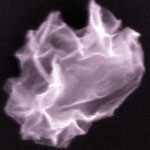 How often have you crumpled a sheet of paper in frustration and thrown it into the bin without further thought? You'll be amazed to hear that researchers - inspired by a trash can full of crumpled-up papers - have now applied this to solving one of the challenges of scaling up production of graphene sheets. One of the fascinating properties of crumpled paper balls is their strain-hardening effect - the harder you compress them, the stiffer they become, due to the formation of folded ridges that increase the strength. A similar effect has now been found in crumpled graphene balls. These crumpled particles exhibits strain-hardening behaviors, thus making them remarkable resistant to aggregation in both solution and dried states.
How often have you crumpled a sheet of paper in frustration and thrown it into the bin without further thought? You'll be amazed to hear that researchers - inspired by a trash can full of crumpled-up papers - have now applied this to solving one of the challenges of scaling up production of graphene sheets. One of the fascinating properties of crumpled paper balls is their strain-hardening effect - the harder you compress them, the stiffer they become, due to the formation of folded ridges that increase the strength. A similar effect has now been found in crumpled graphene balls. These crumpled particles exhibits strain-hardening behaviors, thus making them remarkable resistant to aggregation in both solution and dried states.
Oct 18th, 2011
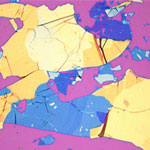 Carbon nanotubes (CNTs) have not yet met commercial expectations from a decade ago, and now hot on its heels is graphene. Graphene is considered a hot candidate for applications such as computers, displays, photovoltaics, and flexible electronics. The biggest opportunity for both materials is in printed and potentially printed electronics. In a comparably short time a large amount of graphene materials have become commercially available contributing to further advancements and application development. At a fraction of the weight and cost of CNTs, graphene may displace carbon nanotubes and even indium tin oxide in some applications. Flexible, see-through displays may be the one application that finally puts graphene into the commercial spotlight.
Carbon nanotubes (CNTs) have not yet met commercial expectations from a decade ago, and now hot on its heels is graphene. Graphene is considered a hot candidate for applications such as computers, displays, photovoltaics, and flexible electronics. The biggest opportunity for both materials is in printed and potentially printed electronics. In a comparably short time a large amount of graphene materials have become commercially available contributing to further advancements and application development. At a fraction of the weight and cost of CNTs, graphene may displace carbon nanotubes and even indium tin oxide in some applications. Flexible, see-through displays may be the one application that finally puts graphene into the commercial spotlight.
Sep 28th, 2011
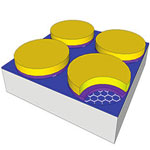 Electronic memory devices are increasingly expected to provide not only greater storage density, but also faster access to information. As storage density increases, however, power consumption and unwanted heat generation also increase, and the fidelity of accessing the memory is frequently diminished. Various platforms exist to overcome these hurdles and, increasingly, graphene finds it way into computer memory technology. The most recent example are experiments that demonstrate the benefits of graphene as a platform for flash memory which show the potential to exceed the performance of current flash memory technology by utilizing the intrinsic properties of graphene.
Electronic memory devices are increasingly expected to provide not only greater storage density, but also faster access to information. As storage density increases, however, power consumption and unwanted heat generation also increase, and the fidelity of accessing the memory is frequently diminished. Various platforms exist to overcome these hurdles and, increasingly, graphene finds it way into computer memory technology. The most recent example are experiments that demonstrate the benefits of graphene as a platform for flash memory which show the potential to exceed the performance of current flash memory technology by utilizing the intrinsic properties of graphene.
Sep 5th, 2011
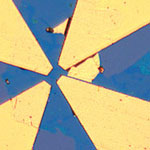 Surface energy is ubiquitous in nature and it plays an important role in many scientific areas such as for instance surface physics, biophysics, surface chemistry, or catalysis. Prior to the area of nanotechnology it has been impractical to consider utilizing surface energy as an energy source because there are few molecules or atoms involved in the surface interaction and the density of surface energy is low. Now, however, due to the lower power consumption requirements of nanoscale devices and the higher specific surface area for nanomaterials it appears attractive to use surface energy at the nanoscale. In new work, researchers have investigated how the flow of water over surfaces coated with graphene could generate small amounts of electricity.
Surface energy is ubiquitous in nature and it plays an important role in many scientific areas such as for instance surface physics, biophysics, surface chemistry, or catalysis. Prior to the area of nanotechnology it has been impractical to consider utilizing surface energy as an energy source because there are few molecules or atoms involved in the surface interaction and the density of surface energy is low. Now, however, due to the lower power consumption requirements of nanoscale devices and the higher specific surface area for nanomaterials it appears attractive to use surface energy at the nanoscale. In new work, researchers have investigated how the flow of water over surfaces coated with graphene could generate small amounts of electricity.
Jul 25th, 2011
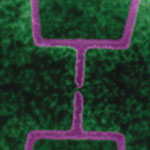 The field of single-molecule magnets is very promising, since an individual magnetic molecule represent the ultimate size limit to store and processing information. Magnetic molecules are considered very promising for spintronics since they can store a bit of information in an extremely small volume. However, in order to make magnetic molecules work, one has to find a way to measure their magnetization. Usual approaches are often very invasive and may lead to a strong perturbation of the properties of the molecules. A European research team has now designed and realized a novel hybrid spintronic nanodevice where the state of the molecule is measured 'indirectly', through a sensor coupled with the molecule.
The field of single-molecule magnets is very promising, since an individual magnetic molecule represent the ultimate size limit to store and processing information. Magnetic molecules are considered very promising for spintronics since they can store a bit of information in an extremely small volume. However, in order to make magnetic molecules work, one has to find a way to measure their magnetization. Usual approaches are often very invasive and may lead to a strong perturbation of the properties of the molecules. A European research team has now designed and realized a novel hybrid spintronic nanodevice where the state of the molecule is measured 'indirectly', through a sensor coupled with the molecule.
Jul 5th, 2011
 The integration of biological components with electronics, and more specifically, the interfacing of complex biological systems is one of the current challenges on the path towards bioelectronics (or bionics for short). Up to know, and due to its technology maturity, most of the work has been done based on Si-FET technology. However, there have been some issues related to this technology which prevented a more successful implementation into real applications. Researchers have now demonstrated, for the first time, that CVD grown graphene can be employed to fabricate arrays of transistors which are able to detect the electrical activity of electrogenic cells.
The integration of biological components with electronics, and more specifically, the interfacing of complex biological systems is one of the current challenges on the path towards bioelectronics (or bionics for short). Up to know, and due to its technology maturity, most of the work has been done based on Si-FET technology. However, there have been some issues related to this technology which prevented a more successful implementation into real applications. Researchers have now demonstrated, for the first time, that CVD grown graphene can be employed to fabricate arrays of transistors which are able to detect the electrical activity of electrogenic cells.
 Subscribe to our Nanotechnology Spotlight feed
Subscribe to our Nanotechnology Spotlight feed





